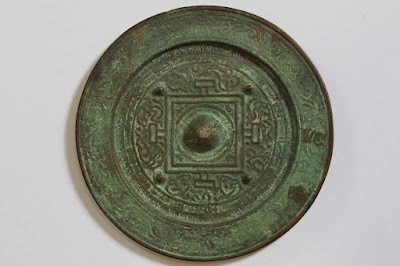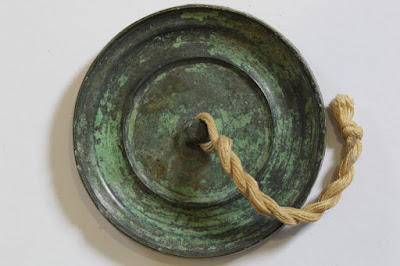Bronze mirrors were produced in China from neolithic times until the Qing Dynasty, when western glass mirrors were brought to China. Bronze mirrors were usually circular, with one side polished bright, to give a reflection, and the reverse side with designs. They often had a knob in the center so that they could be attached to clothing. Some of the earliest examples of Chinese bronze mirrors belonged to the Neolithic Qijia culture from around 2000 BCE. However, until Warring States times, bronze mirrors were not common with approximately only twenty having been discovered. During the Warring States period, mirrors became particularly popular. It was during the Han Dynasty, and the introduction of the TLV mirror, that mirrors started to be mass-produced.
Both Han and Tang mirrors are considered to be the most technically advanced. Bronze mirrors continued to remain popular up through the Song Dynasty, but then gradually lost their popularity and ceased to be produced after the arrival of Western mirrors during the Ming and Qing dynasties.
Both Han and Tang mirrors are considered to be the most technically advanced. Bronze mirrors continued to remain popular up through the Song Dynasty, but then gradually lost their popularity and ceased to be produced after the arrival of Western mirrors during the Ming and Qing dynasties.







No comments:
Post a Comment